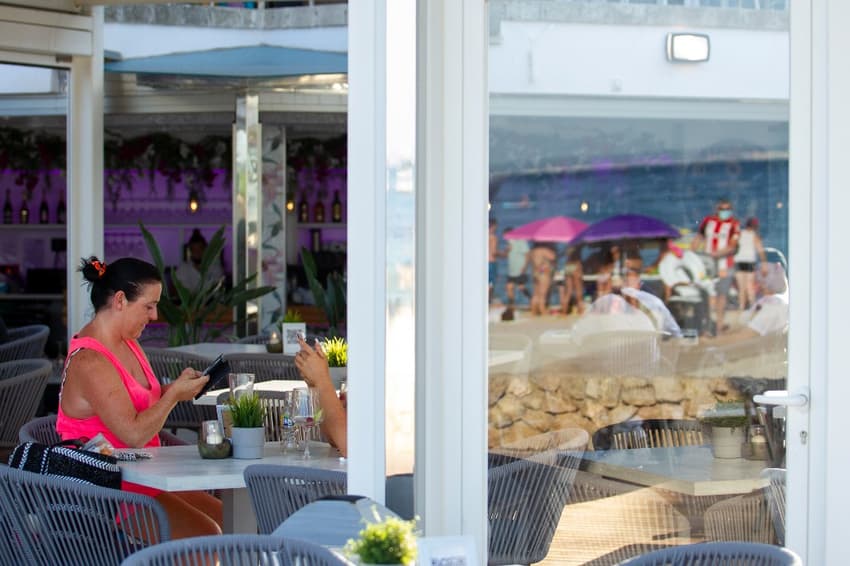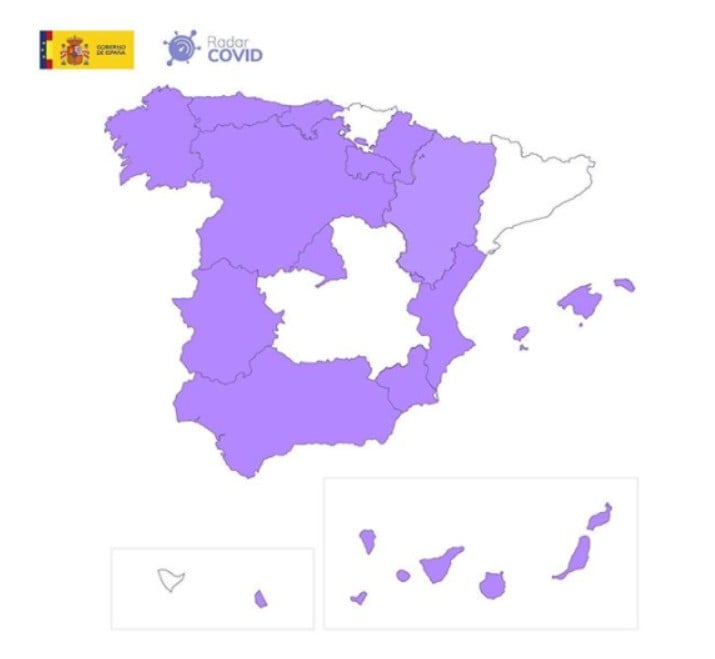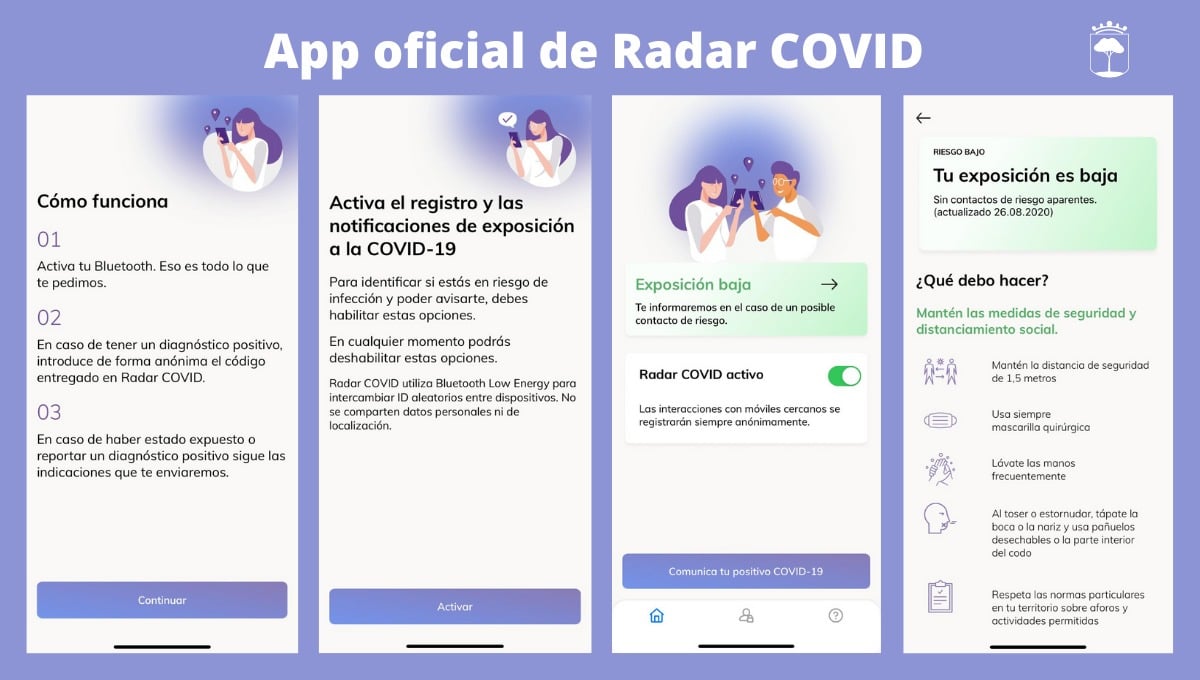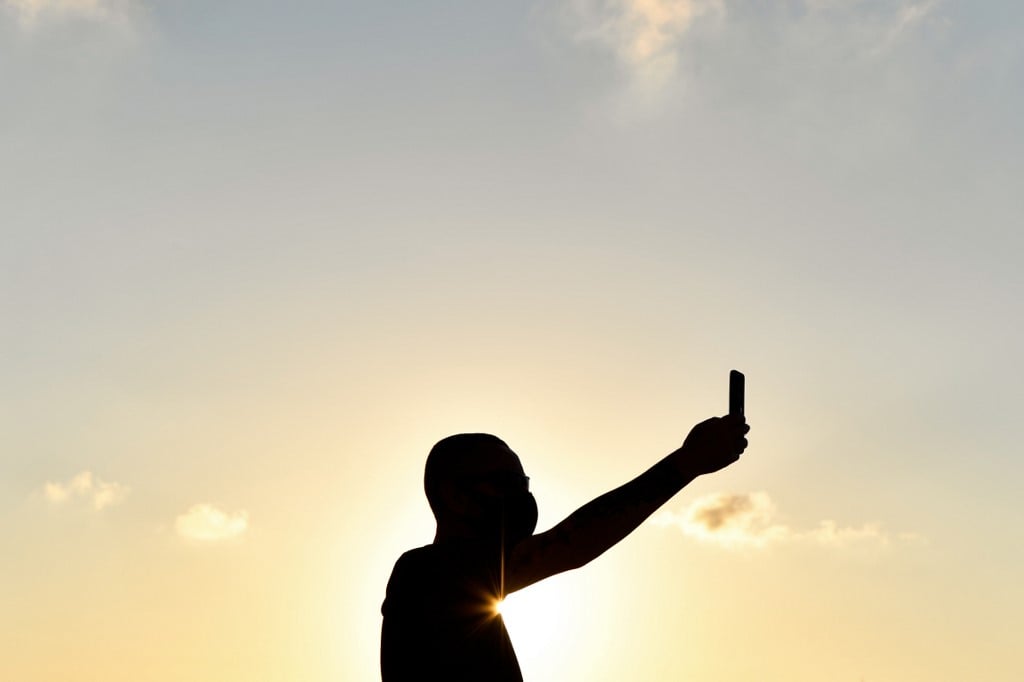Radar Covid: What you need to know about the app Spain says you 'must' download

On Tuesday Spain’s Prime Minister Pedro Sanchez said residents "must" download "Radar Covid", the tracking app that will help authorities trace those who have been close to an infected person.
Last month Spain’s Prime Minister Pedro Sanchez said residents "must" download "Radar Covid", the tracking app that will help authorities trace those who have been close to an infected person.
It is currently being rolled out in regions across Spain after a pilot test in La Gomera and is now up an running across 75 percent of Spain and is available to download on Apple and Android app stores.
So far it is up and running in 14 of Spain's autonomous regions plus the North African enclave of Melilla and although it should have been fully functioning across all of Spain by September 15th, there are still three regions and Ceuta where it has yet to be fully incorporated with the health system.
The map below shows in purple those places where it is up and running as of Thursday September 17th according to the Spanish government. It's launch has reportedly been delayed in the Basque Country because of the inclusion of the Basque language.

How does it work?
Once downloaded onto a mobile device it uses Bluetooth technology to connect and collect data from other handsets with the app after they have been in close proximity for a prolonged period.
So if two handsets are within two metres of each other for at least 15 minutes the data is swapped and stored for a period of two weeks from that meeting.
If one of those people then tests positive to Covid-19 within two weeks, they are given a code which, when entered into the app, will send an alert to all those whose data has been swapped and therefore could be at risk.
All this is done in an anonymous way, that is without the identity of any of those who have connected being revealed to each other.

What about privacy?
No personal information or location data is exchanged by Radar Covid which uses anonymous identifiers that change frequently in order to protect against violations of privacy.
Basically, when the application is active, it generates a daily random key from which identifiers are created that change after 10 to 20 minutes and are transmitted to nearby mobiles via Bluetooth. These codes do not contain any personal identifier that can make it easier to recognize the device or the person to whom the mobile belongs.
What if you test positive?
If you receive a positive result from a PCR test, the medical authorities will issue a number that when entered into the app will send a message to all those considered at risk – those were picked up by your phone as spending at least 15 minutes within two metres from you. Sometimes this will be someone you know but equally it may be a stranger who sat on the next table from you on a terrace while you had coffee.
They will be sent a message telling them that they could be at risk and need to take a test, they will not be told when or where the contagion may have happened or who they may have caught it from.
How effective a tool is it?
PM Pedro Sanchez claimed in a televised address at the end of August that “according to the estimations we have, if more than 20 percent (of the nation) downloads the app, it could reduce the impact of the pandemic by 30 percent.”
But ideally, the app will be most effective if downloaded by 60 percent of the population according to a study on contract tracing from University of Oxford.
The pilot test in the Canary Island of La Gomera staged a simulated outbreak which showed that the app was able to identify almost double the number of close contacts put at risk of contagion compared to efforts carried out by human tracers.
More than 4 million people had downloaded the Spanish app by September 15th, according to Carme Artigas, head of Spain's state digital and artificial intelligence unit. That's halfway to the minimum 20 percent target set by Sanchez last month.

Is it easy to understand?
The app will give you the option of operating it in Castellano, Catalan and English, so that makes things easier for those who aren't yet fluent in Spanish or who are just visiting.
Shortcomings
The app isn't up and running in all regions of Spain yet. And obviously it has limitations. It only detects those who you spent a minimum of 15 minutes with, discounting those who may have been in close contact for 14 minutes and 59 seconds!
It also will not detect or alert those people who, heaven forbid, don't have a mobile phone - or those who haven't downloaded the app. And in Spain that tends to be those of an advanced age, who may then spread it to others of an advanced age - a community that we know is most at risk from suffering serious consequences from catching the virus.
It may also create false positives by alerting those who you may have been in close proximity to but not actually crossed paths, such as connecting to a neighbour through the wall or window without having spent any time in the same space.
It is unavaliable to those with older mobile phones because it requires at least an Android 6 or iOS 13.5 operating system- and estimated 3 million people have handsets that are too old and therefore not compatible with the app.
But still, it's currently the best hope for a track and trace system that Spain has to offer, although the government also announced that it will be training soldiers to step in and help trace in the worst hit regions.
READ MORE:
Comments (2)
See Also
Last month Spain’s Prime Minister Pedro Sanchez said residents "must" download "Radar Covid", the tracking app that will help authorities trace those who have been close to an infected person.
It is currently being rolled out in regions across Spain after a pilot test in La Gomera and is now up an running across 75 percent of Spain and is available to download on Apple and Android app stores.
So far it is up and running in 14 of Spain's autonomous regions plus the North African enclave of Melilla and although it should have been fully functioning across all of Spain by September 15th, there are still three regions and Ceuta where it has yet to be fully incorporated with the health system.
The map below shows in purple those places where it is up and running as of Thursday September 17th according to the Spanish government. It's launch has reportedly been delayed in the Basque Country because of the inclusion of the Basque language.

How does it work?
Once downloaded onto a mobile device it uses Bluetooth technology to connect and collect data from other handsets with the app after they have been in close proximity for a prolonged period.
So if two handsets are within two metres of each other for at least 15 minutes the data is swapped and stored for a period of two weeks from that meeting.
If one of those people then tests positive to Covid-19 within two weeks, they are given a code which, when entered into the app, will send an alert to all those whose data has been swapped and therefore could be at risk.
All this is done in an anonymous way, that is without the identity of any of those who have connected being revealed to each other.

What about privacy?
No personal information or location data is exchanged by Radar Covid which uses anonymous identifiers that change frequently in order to protect against violations of privacy.
Basically, when the application is active, it generates a daily random key from which identifiers are created that change after 10 to 20 minutes and are transmitted to nearby mobiles via Bluetooth. These codes do not contain any personal identifier that can make it easier to recognize the device or the person to whom the mobile belongs.
What if you test positive?
If you receive a positive result from a PCR test, the medical authorities will issue a number that when entered into the app will send a message to all those considered at risk – those were picked up by your phone as spending at least 15 minutes within two metres from you. Sometimes this will be someone you know but equally it may be a stranger who sat on the next table from you on a terrace while you had coffee.
They will be sent a message telling them that they could be at risk and need to take a test, they will not be told when or where the contagion may have happened or who they may have caught it from.
How effective a tool is it?
PM Pedro Sanchez claimed in a televised address at the end of August that “according to the estimations we have, if more than 20 percent (of the nation) downloads the app, it could reduce the impact of the pandemic by 30 percent.”
But ideally, the app will be most effective if downloaded by 60 percent of the population according to a study on contract tracing from University of Oxford.
The pilot test in the Canary Island of La Gomera staged a simulated outbreak which showed that the app was able to identify almost double the number of close contacts put at risk of contagion compared to efforts carried out by human tracers.
More than 4 million people had downloaded the Spanish app by September 15th, according to Carme Artigas, head of Spain's state digital and artificial intelligence unit. That's halfway to the minimum 20 percent target set by Sanchez last month.

Is it easy to understand?
The app will give you the option of operating it in Castellano, Catalan and English, so that makes things easier for those who aren't yet fluent in Spanish or who are just visiting.
Shortcomings
The app isn't up and running in all regions of Spain yet. And obviously it has limitations. It only detects those who you spent a minimum of 15 minutes with, discounting those who may have been in close contact for 14 minutes and 59 seconds!
It also will not detect or alert those people who, heaven forbid, don't have a mobile phone - or those who haven't downloaded the app. And in Spain that tends to be those of an advanced age, who may then spread it to others of an advanced age - a community that we know is most at risk from suffering serious consequences from catching the virus.
It may also create false positives by alerting those who you may have been in close proximity to but not actually crossed paths, such as connecting to a neighbour through the wall or window without having spent any time in the same space.
It is unavaliable to those with older mobile phones because it requires at least an Android 6 or iOS 13.5 operating system- and estimated 3 million people have handsets that are too old and therefore not compatible with the app.
But still, it's currently the best hope for a track and trace system that Spain has to offer, although the government also announced that it will be training soldiers to step in and help trace in the worst hit regions.
READ MORE:
Join the conversation in our comments section below. Share your own views and experience and if you have a question or suggestion for our journalists then email us at [email protected].
Please keep comments civil, constructive and on topic – and make sure to read our terms of use before getting involved.
Please log in here to leave a comment.